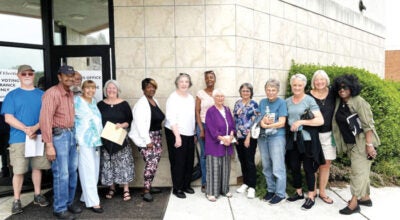Editorial: Save beacon of hope
Published 12:00 am Friday, July 18, 2008
Now and then people suggest Salisbury City Council members do something that, in their heart of hearts, they know they should have done already ó and would have, in an ideal world.
In an ideal world, the particular concerns of the city’s residents ó of every neighborhood, every age group, every race and income level ó would be treated as seriously as water quality and public safety. In an ideal world, the city would have plenty of money to address those concerns.
The world is not ideal, and worse things could be said about the current state of the economy. But sometimes a need or idea arises that’s worth the city’s attention despite obvious obstacles.
A coterie of community activists interested in the former J.C. Price High School visited the council last week to bring attention to the building’s condition and push for its restoration. Though not used as a high school since integration in 1969, the West Bank Street building has continued to serve important functions. It houses the Community Action Council, a multi-million-dollar agency administering programs that grew out of Lyndon Johnson’s war on poverty ó Head Start being perhaps the most well-known. The adjacent Hall Gym is the scene of recreation programs that serve the entire city, not just the immediate neighborhood.
If a feasibility study finds the cost within the city’s reach, Price High School should be restored. The building’s history alone would justify that. Built in 1932 during the Depression to educate black children, the school was a beacon of hope in an era that sometimes seemed utterly hopeless. Add to that its multiple uses and the potential for more, and this project almost begs to be done. It’s been said the greenest buildings are the ones already built. And this particular one tells an important part of Salisbury’s history. A restored Price High School could add much to the city.
The city owns the building and has responsibility for it. City Council also is responsible for spending city resources wisely, and restoring an old building is an expensive endeavor. True restoration, done with attention to detail and the aim of permanence ó not something slapped together for the time being ó is a slow and costly project. In an ideal world, if the city finds restoration costs too steep, a generous supporter would step forward to take the lead. Lacking that, foundations and individuals interested in preservation might contribute to help offset costs.
However the funding goes, if the steering committee appointed to study the project convinces the city to move forward, the process may take a long time. It could test everyone’s patience, especially people who work at the Community Action Council. Kudos go to Executive Director Elizabeth Fields, Council Member Pete Kennedy and others for approaching the council with the idea. Economically, the time might not seem right; money will be an obstacle. But this building has waited long enough.


